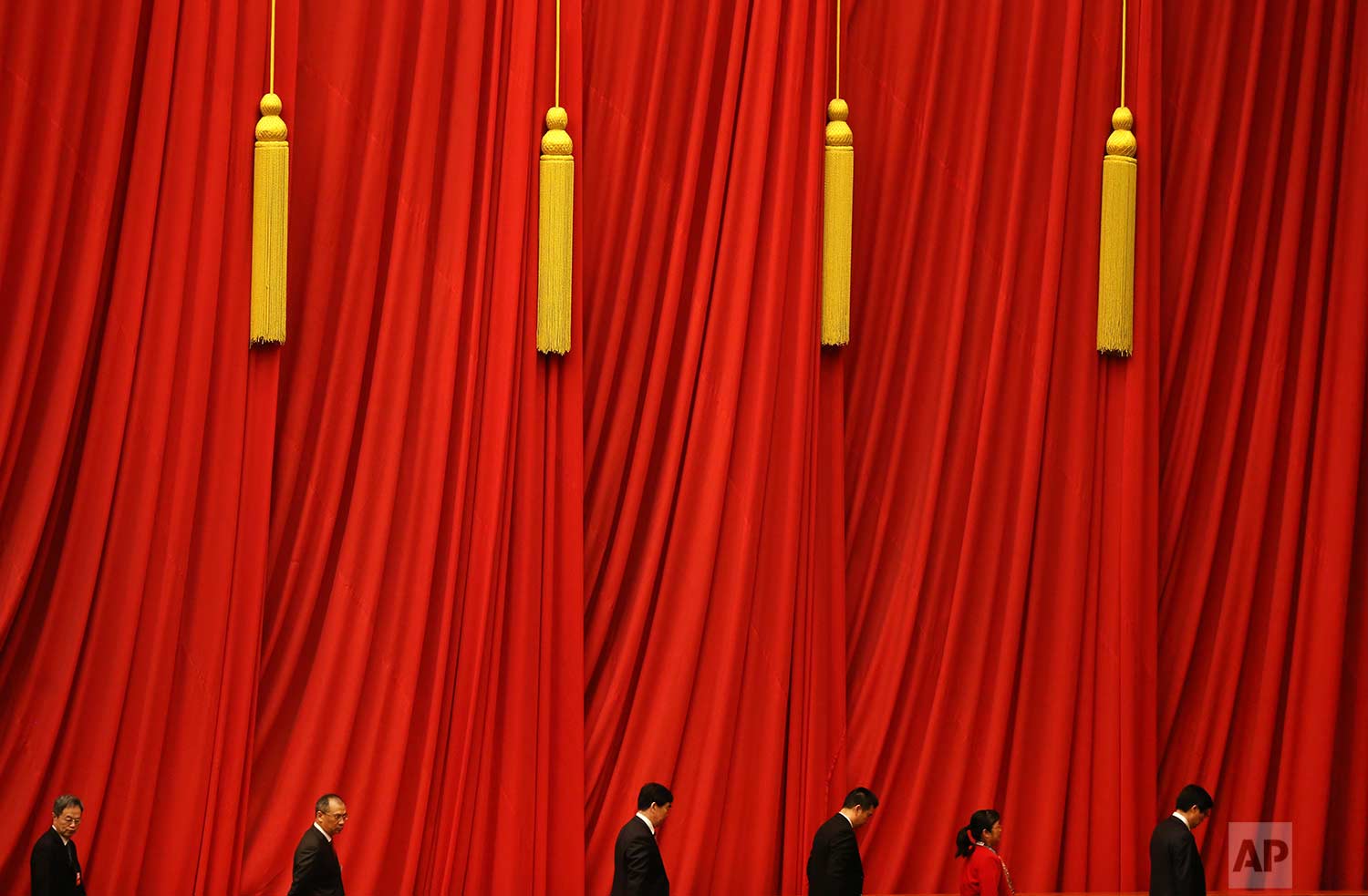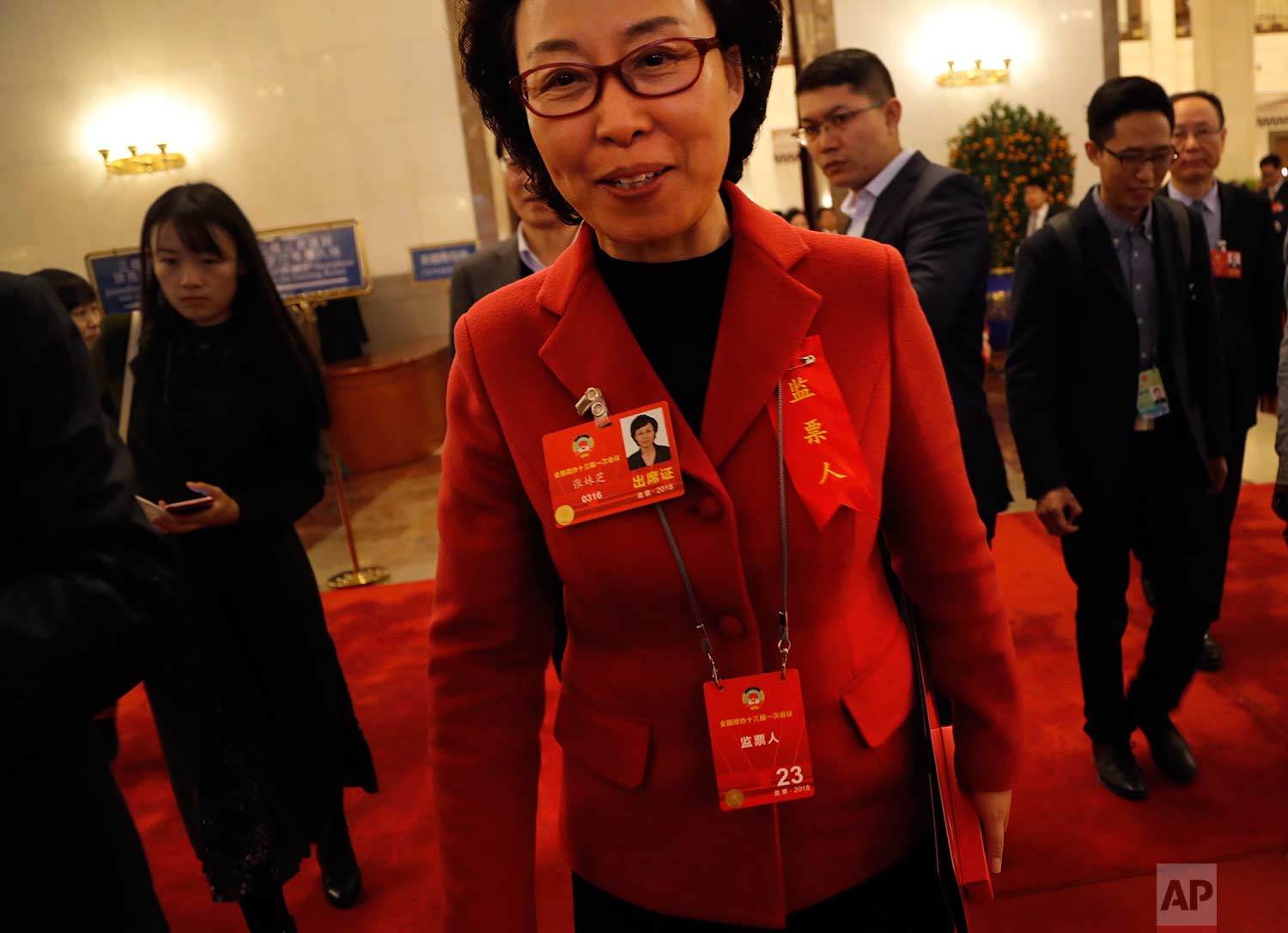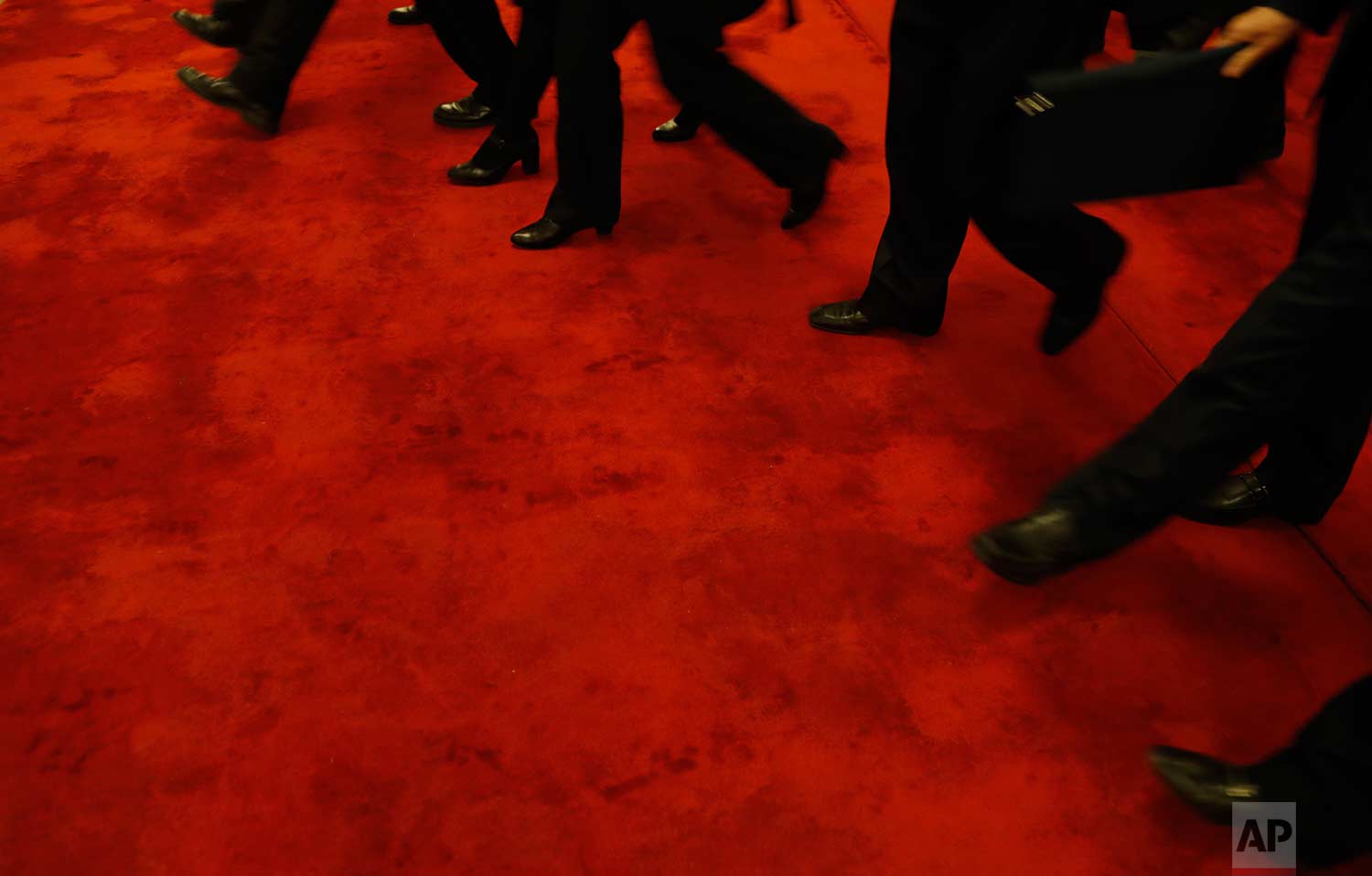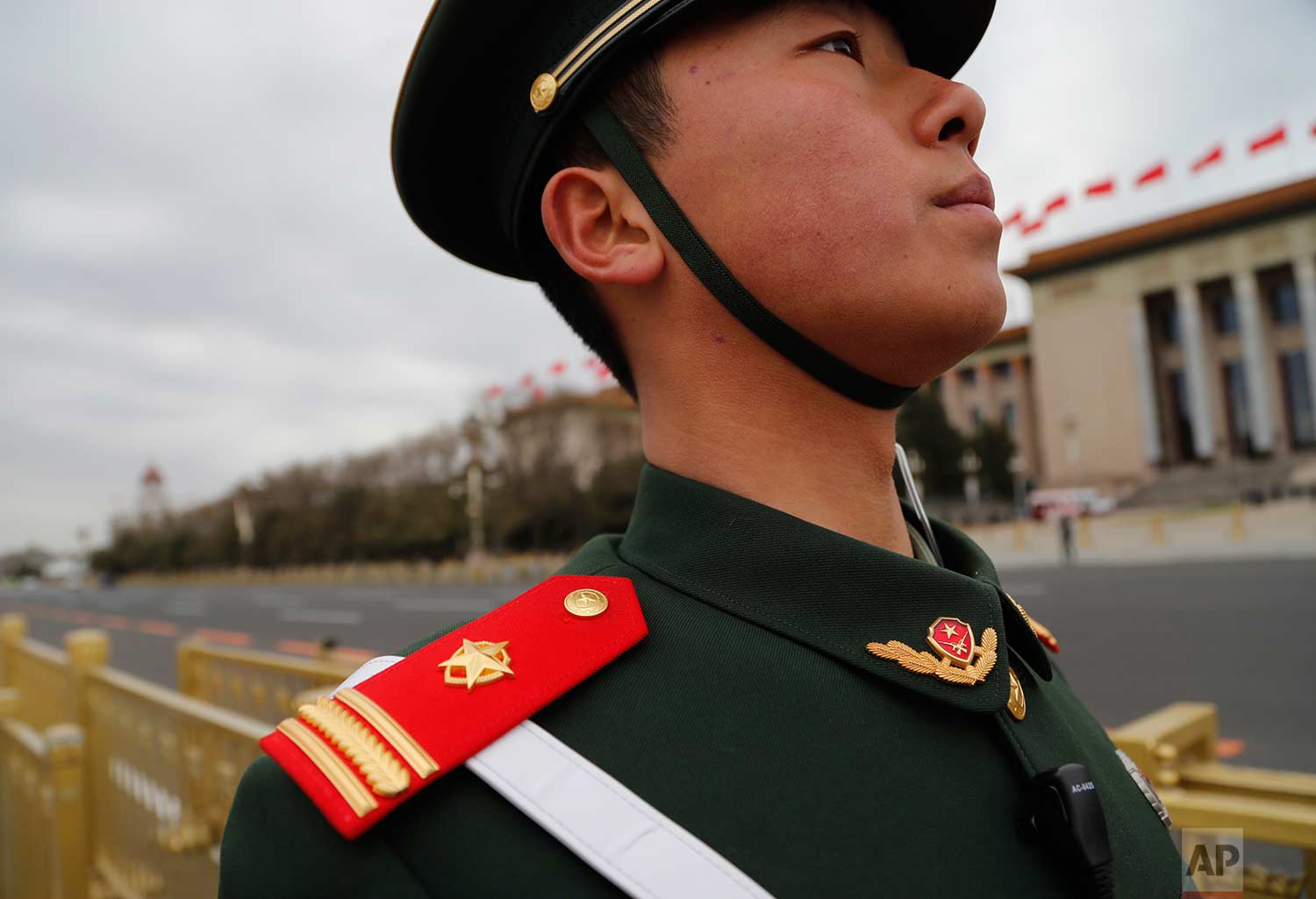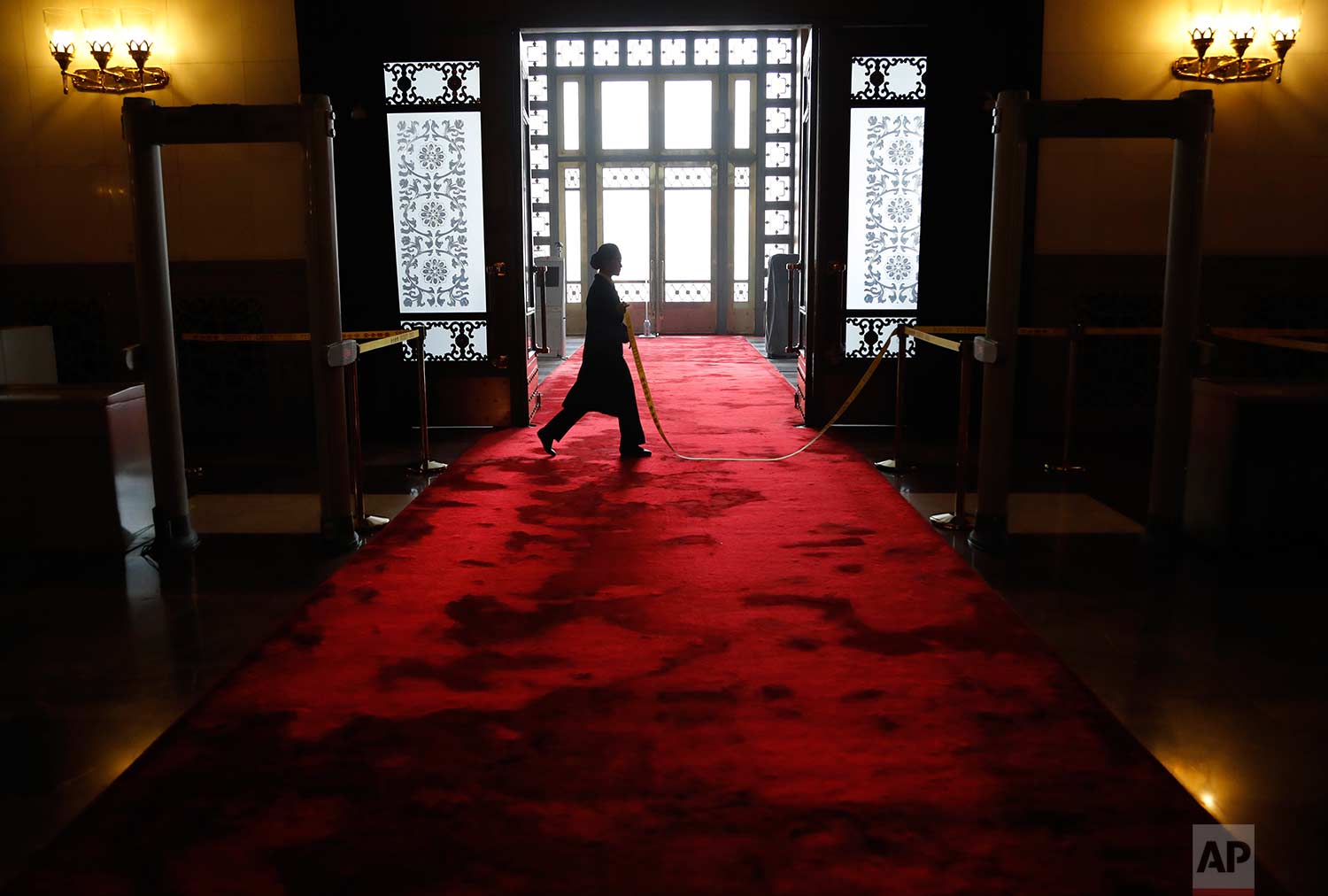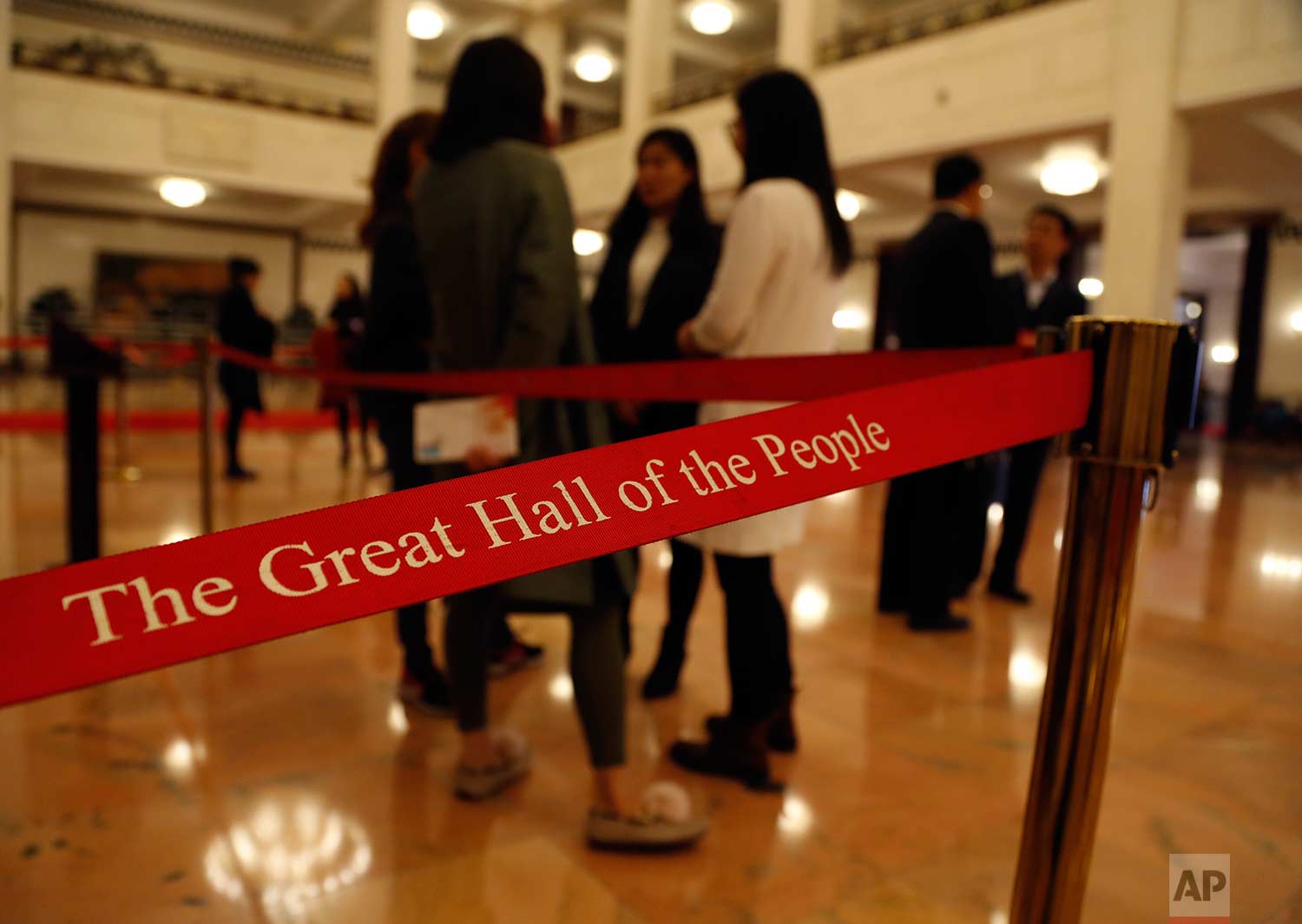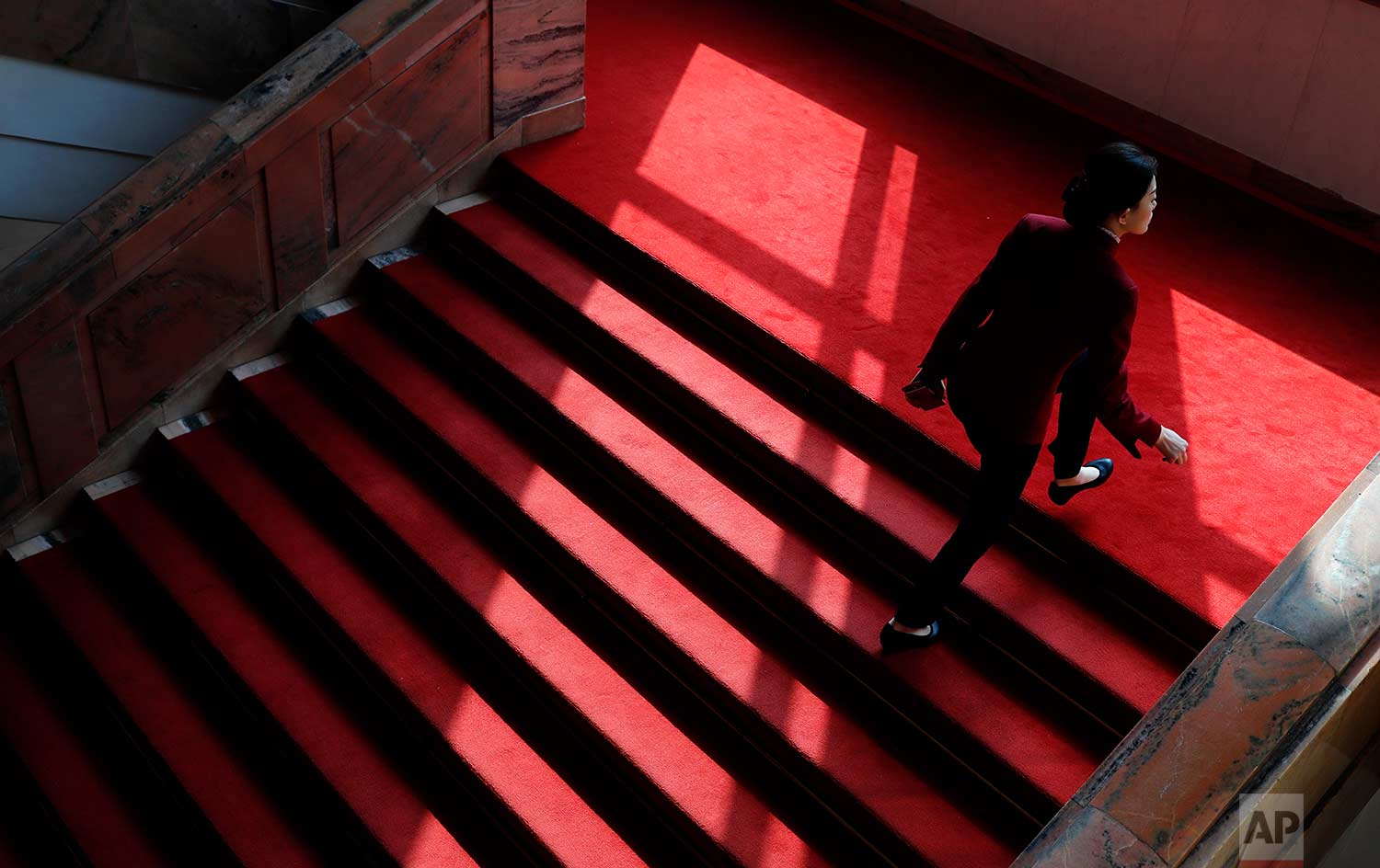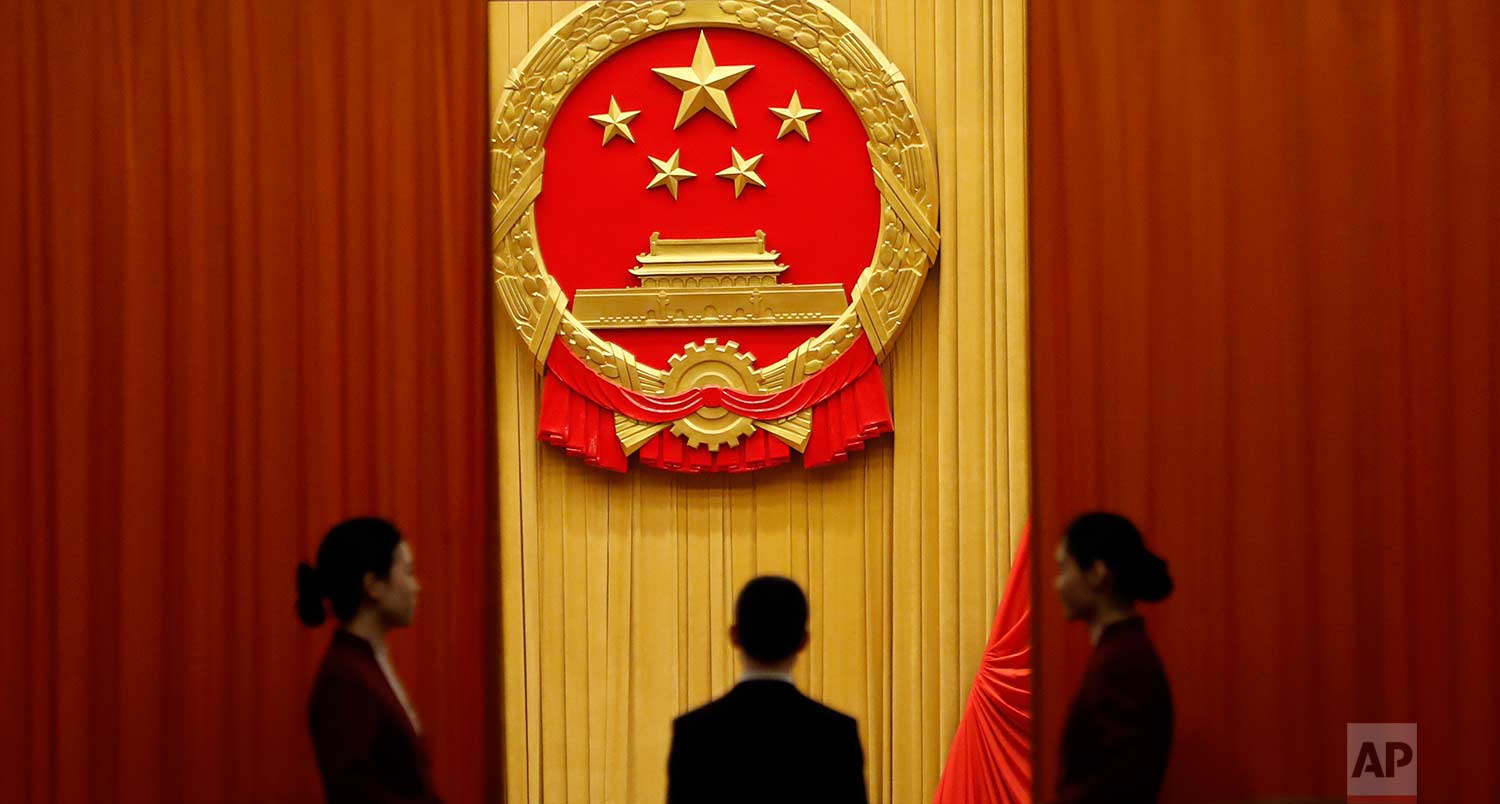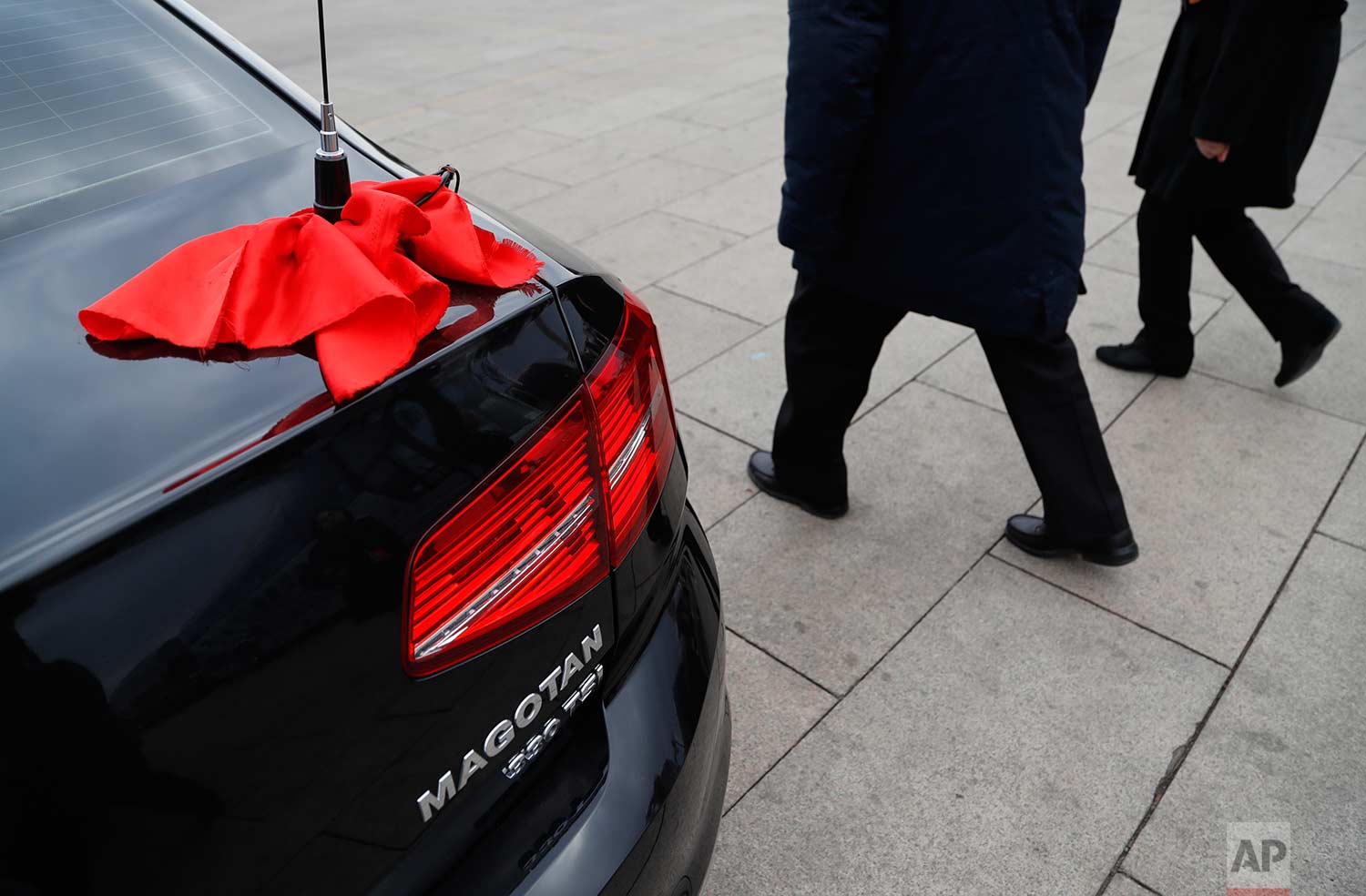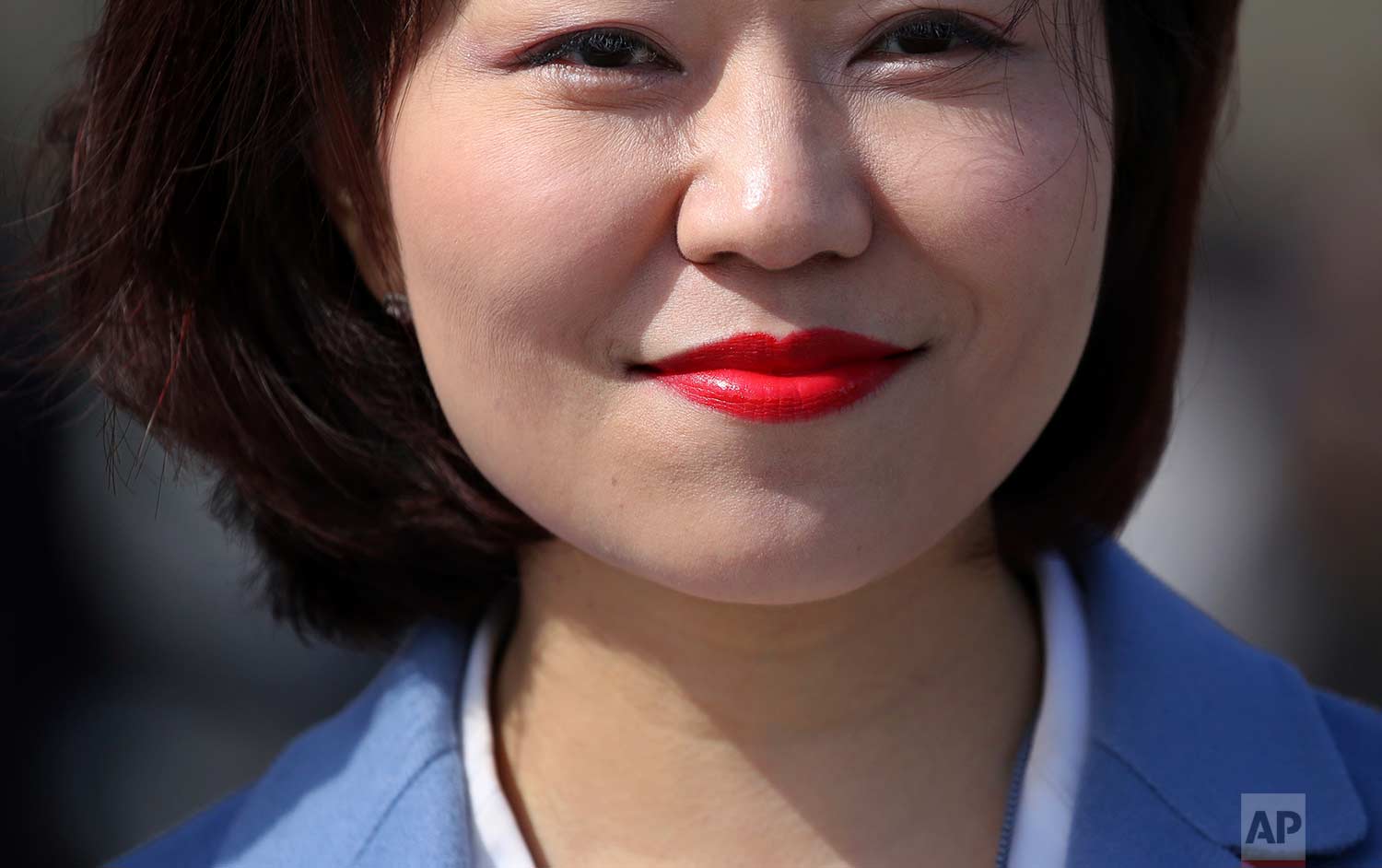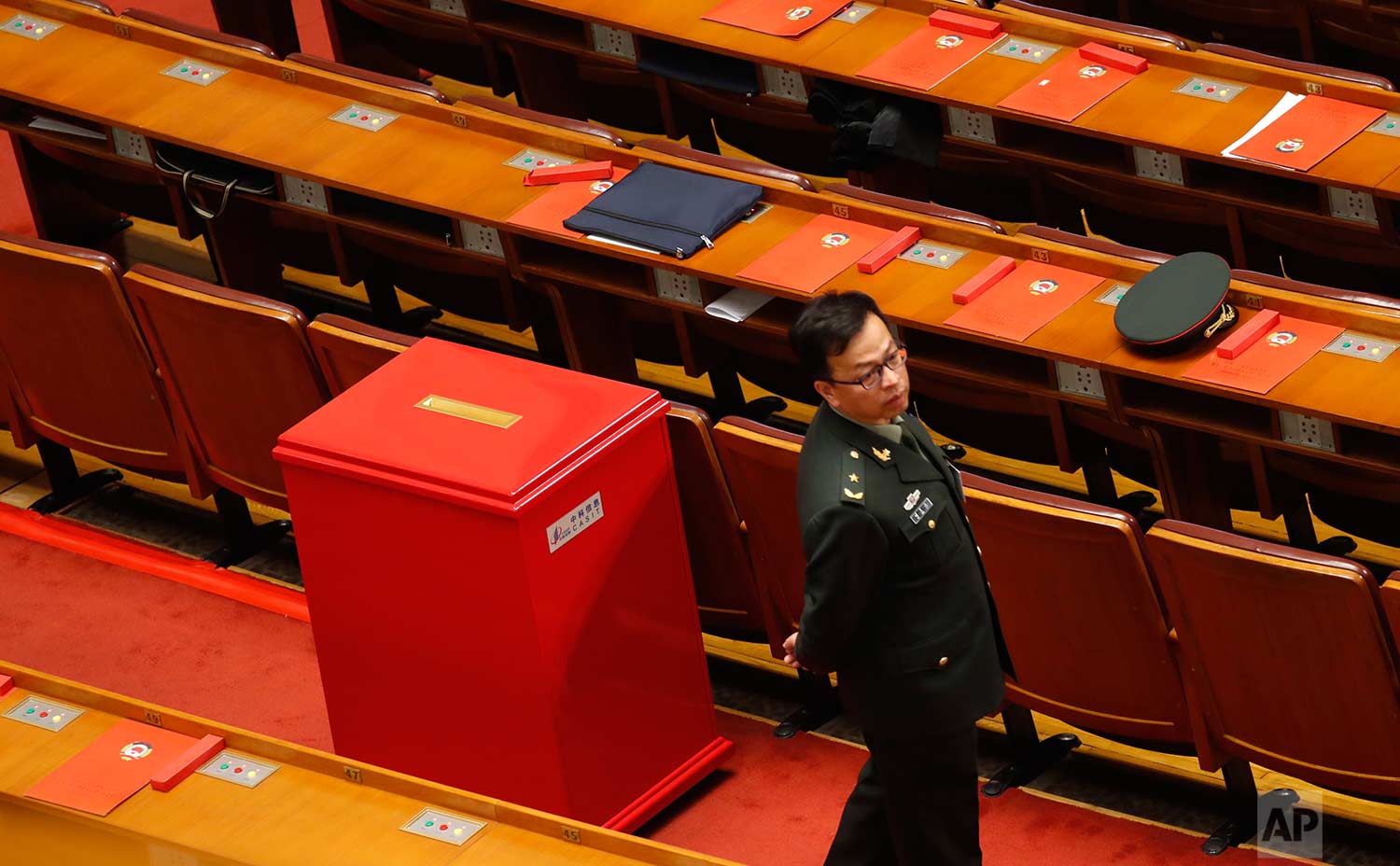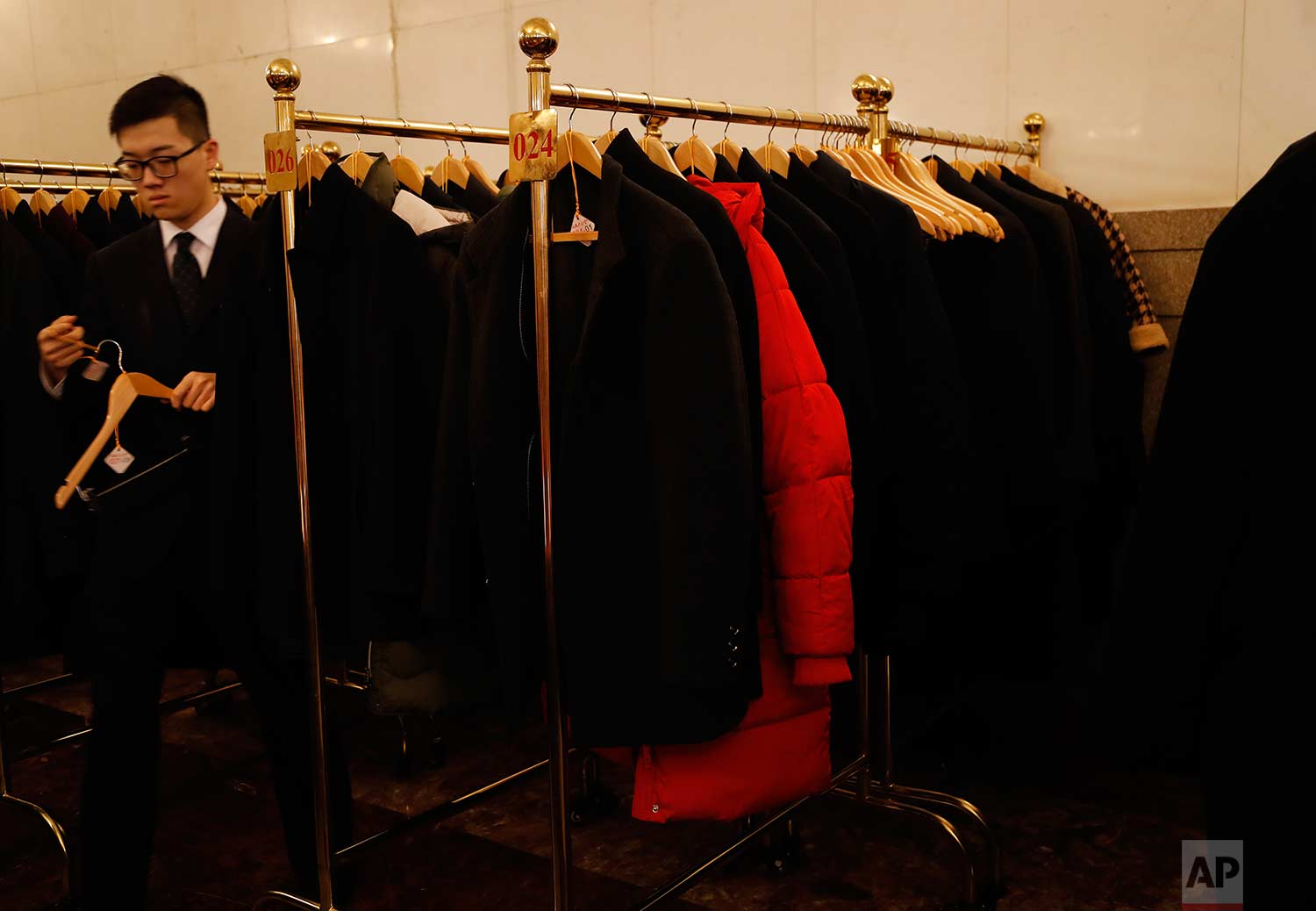Curtains to carpets, red rules Chinese politics

Come to any event at the Great Hall of the People in the heart of Beijing, and you’re bound to see red.
As the hulking venue for official pomp and ceremony hosts the annual meeting of China’s rubber-stamp parliament this month, flags of scarlet line the building’s rooftops, red carpets cover its floors and hostesses in long ruby-colored dresses welcome dark-suited delegates.
Red has long be special in Chinese culture, representing good fortune — but not necessarily its rulers. For centuries, China’s emperors were equated with the color yellow while they surrounded themselves with walls of deep vermilion. Not until after the Communist Party swept to power in 1949, did red, the universal color of communism, dominate political imagery.
During the Cultural Revolution launched by Mao Zedong, the founder of the communist state, young Red Guards wearing red scarves and armbands touted the Little Red Book of his quotations and sang the anthem the “East Is Red” in praise of their leader.
Today, official government directives are colloquially called “red top” documents and stamped with red-ink seals, while important events are denoted by red headlines in state and party newspapers. An entire class of political elites — including President Xi Jinping — are known as “hongerdai” — the “second red generation” of the party elite.
With the ceremonial legislature voting earlier this month to scrap term limits for Xi, who has strived to preserve communist traditions and reassert the party’s leading place in public life, China will likely be red for many years to come.
Text from the AP news story, AP PHOTOS: Curtains to carpets, red rules Chinese Politics.
Photos by Aijaz Rahi

